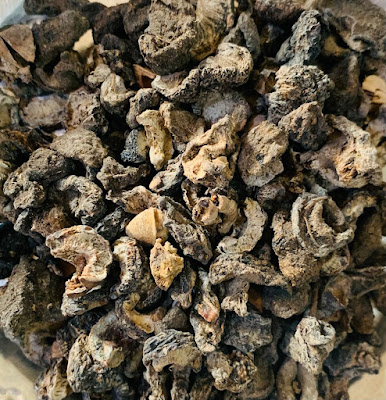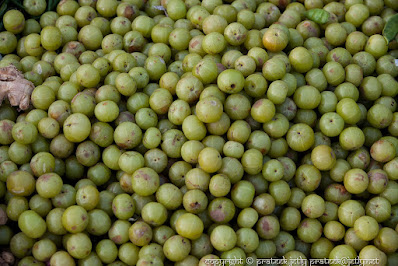Phyllanthus emblica – (Indian Gooseberry)- Amla: An Overview
Introduction:
Phyllanthus emblica, commonly known as Indian gooseberry or Amla, is a deciduous tree native to the Indian subcontinent. It belongs to the Euphorbiaceae family and is renowned for its small, green, and tart berries. The plant is highly valued in traditional Indian medicine, particularly in Ayurveda, for its numerous health benefits. Amla is rich in vitamin C, antioxidants, and various phytochemicals that contribute to its reputation as a potent rejuvenating and immuno-enhancing herb. It is used in various forms, including fresh fruit, powders, and extracts, for its purported benefits in enhancing skin health, digestion, and overall vitality.


Botanical Name:
Phyllanthus emblica Linn.
Emblica officinalis Gaertn
Family:
Euphorbiaceae
Urdu Name:
Amla, Aaonwala, Ambla, Anura
English Name:
Emblic myroblan, Indian gooseberry
Parts Used:
Fruit
Temperament:
Cold + Dry
Order:
Cold (1st Order), Dry ( 2nd Order).
Geographical Source:
China, India, Bangladesh, Malaysia, Sri Lanka, Pakistan, Uzbekistan, Myanmar.
Organoleptic Evaluation:
Colour:
Fresh fruit: Greenish yellow to yellow.
Dried fruit: light brown to brown.
Powder: yellowish brown to brown.
Odour:
Fresh fruit: Sour, slightly sweet.
Dried fruit: Musty, slightly sour.
Powder: Earthy , nutty.
Taste: Sour , astringent.
Texture: Firm, crunchy and juicy.
Appearance: Round, smooth and wrinkled.
Pharmacological Actions / Functions:
Generally the fruit is carminative and stomachic
Fresh fruit is refrigerant
Diuretic and laxative
Useful in chronic constipation
Dried fruit is stomachic
Astringent,
Antidiarrhoeal
Flowers are cooling and aperient
Bark is astringent
It is also regarded as cardiac tonic and hepatoprotective due to vitamin C contents as well as antibilious.
Specific Action:
Carminative
Diuretic
Antiseptic.
Chemical Constituents:
Phyllantine
Phyllantidine
Gallic acid
Ellagic Acid
Emblicanin A and B
Phyllembein
Quercetin
Ascorbic acid
Amlic acid
Chebulinic acid
Alkaloids
Tannins
Polyphenols
Mode of Action:
1-Antidiabetic activity:
Gallic acid ( constituent of Amla) lowers blood sugar levels, improves insulin sensitivity and reduces oxidative stress. It interact with alpha- glucosidase that inhibits carbohydrate digestion, reducing postprandial glucose levels. It enhances insulin secretions, improves beta cell function and reduces apoptosis.
2-Cardiovascular system protection:
Tannins and polyphenols ( Amla) reduces cholesterol, triglycerides, blood pressure, preventing cardiovascular disease. It inhibits AcE ( angiotensin converting enzyme) reducing blood pressure and cardiovascular risk. It enhances cardiac function, reduces oxidative stress and improves myocardial infarction.
Medicinal Uses:
- Fresh (green) fruits of Phyllanthus emblica Linn. are made into pickles and preserves to stimulate appetite.
- Effective against palpitation, scurvy, cardiac and stomach debility, for biliousness and blood heat. Its compound preparations (like Jawarish Amla) are effective against tachycardia and liver dysfunction.
- Dried fruit is useful in diarrhoea and dysentery (with other myrobalans is useful in chronic diarrhoea and biliousness), in habitual constipation a pleasant purgative and of much benefit in palpitation associated with digestive complaints including flatulence, anorexia, dyspepsia etc. Infusion of seeds is given as febrifuge.
- Leaves with fenugreek leaves are given in watery discharges in diarrhoea. Juice and juice sediments possess anti-oxidant properties.
Compound Preparations:
Jawarish Amla
Jawarish Shahi
Itrifal Ustukhudus
Itrifal Aftimun
Itrifal Deedan
Itrifal Zamani
Itrifal Sanai
Itrifal Shahtara
Itrifal Saghir
Itrifal Ghudaddi
Itrifal Fauladi
Itrifa Kabir
Itrifal Kishmishi,
Itrifal Muqil
Itrifal Muqawi Dimagh
Itrifal Mulayyin
Itrifal Mundi
Anoshdaru
Safuf Hazim
Dosage:
3 to 10 g.
Corrigent:
Honey and almond oil.
Tenedium:
Terminalia chebula Retz. (Halila Siyah) as stomach tonic.
Side Effects:
Nutritious – no known toxicity reported following the use of prescribed doses for recommended duration. Occasionally may produce constipation and colic.
Prescription:
1- For Strengthens the Heart, Brain, Liver and Stomach.
Phyllanthus emblica (Amla) 20g
Fennel (Saunf) 20g
Valerian (Balchar) 20g
Rosa ( Gul Surkh) 20g
Almond (Magaz Badam) 50g
Honey 150g
Make a Majun.
Usage:
1 teaspoon night time with milk.
2- For Stomach (Indigestion, Flatulence etc)
Phyllanthus emblica (Amla) 20g
Anethum Graveolens (Soya) 20g
Ammonium Chloride (Noshadar Thikri 20g
Trachyspermum Ammi (Ajwain) 20g
Black Salt (Kala Namak) 10g
Fennel (Saunf) 20g
Make a powder
Usage:
1/2 teaspoon after meal with water.
Conclusion:
Phyllanthus emblica, or Amla, stands out as a significant herb in traditional medicine, particularly Ayurveda, due to its high nutrient content and numerous health benefits. Its rich supply of vitamin C and antioxidants makes it a valuable asset for enhancing immune function, improving skin health, and supporting overall well-being. Modern research continues to explore and validate its traditional uses, highlighting its potential as a natural remedy for various ailments. Overall, Amla’s versatile applications and health-promoting properties underscore its importance as both a medicinal and nutritional powerhouse.
